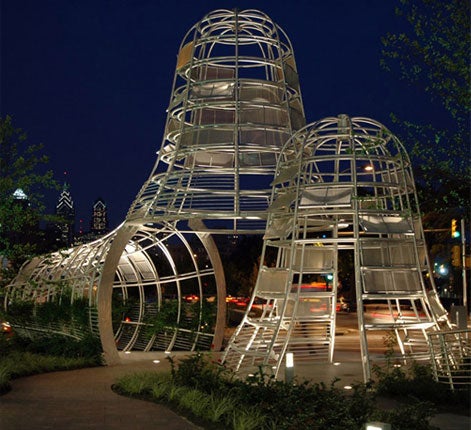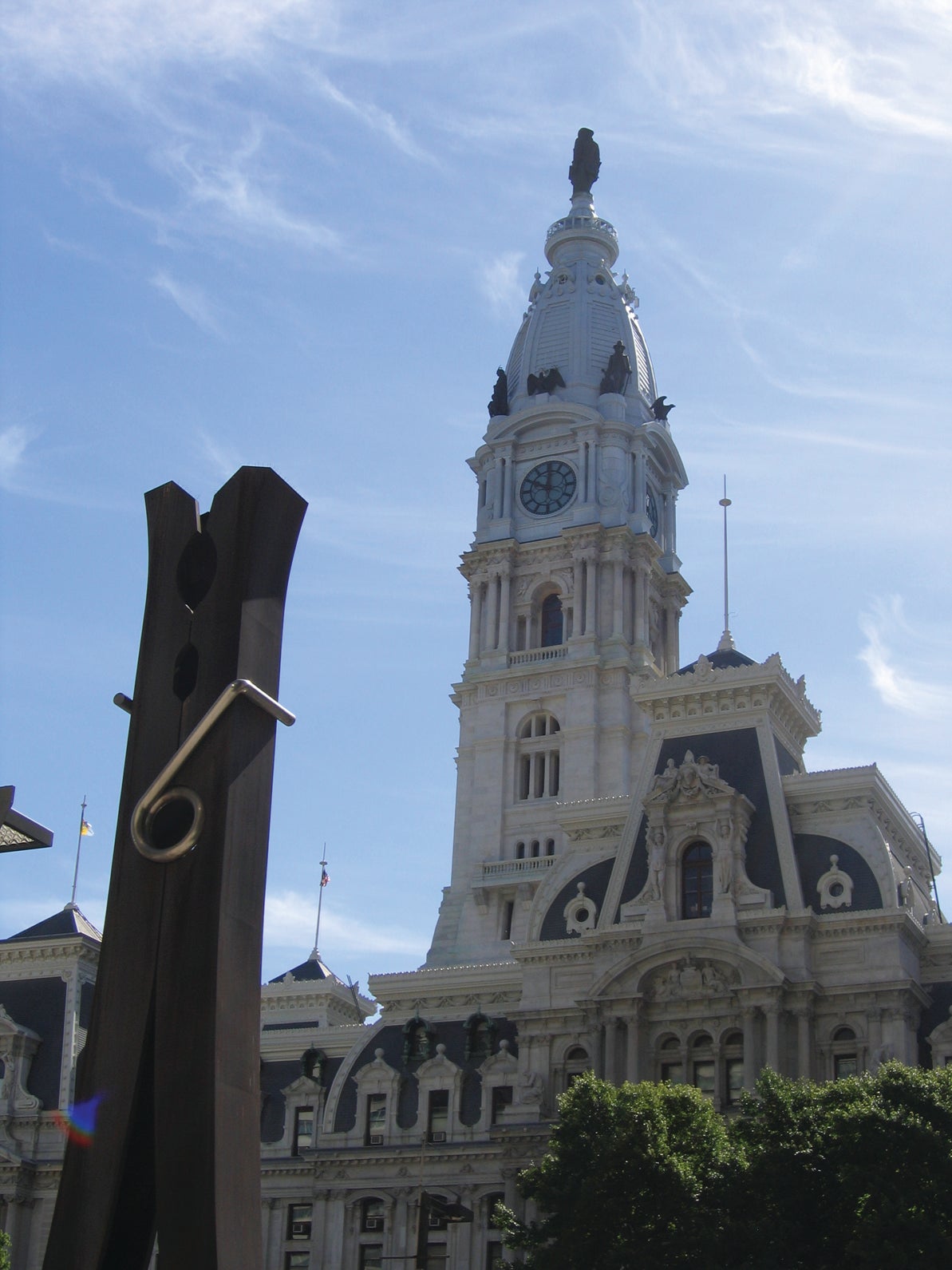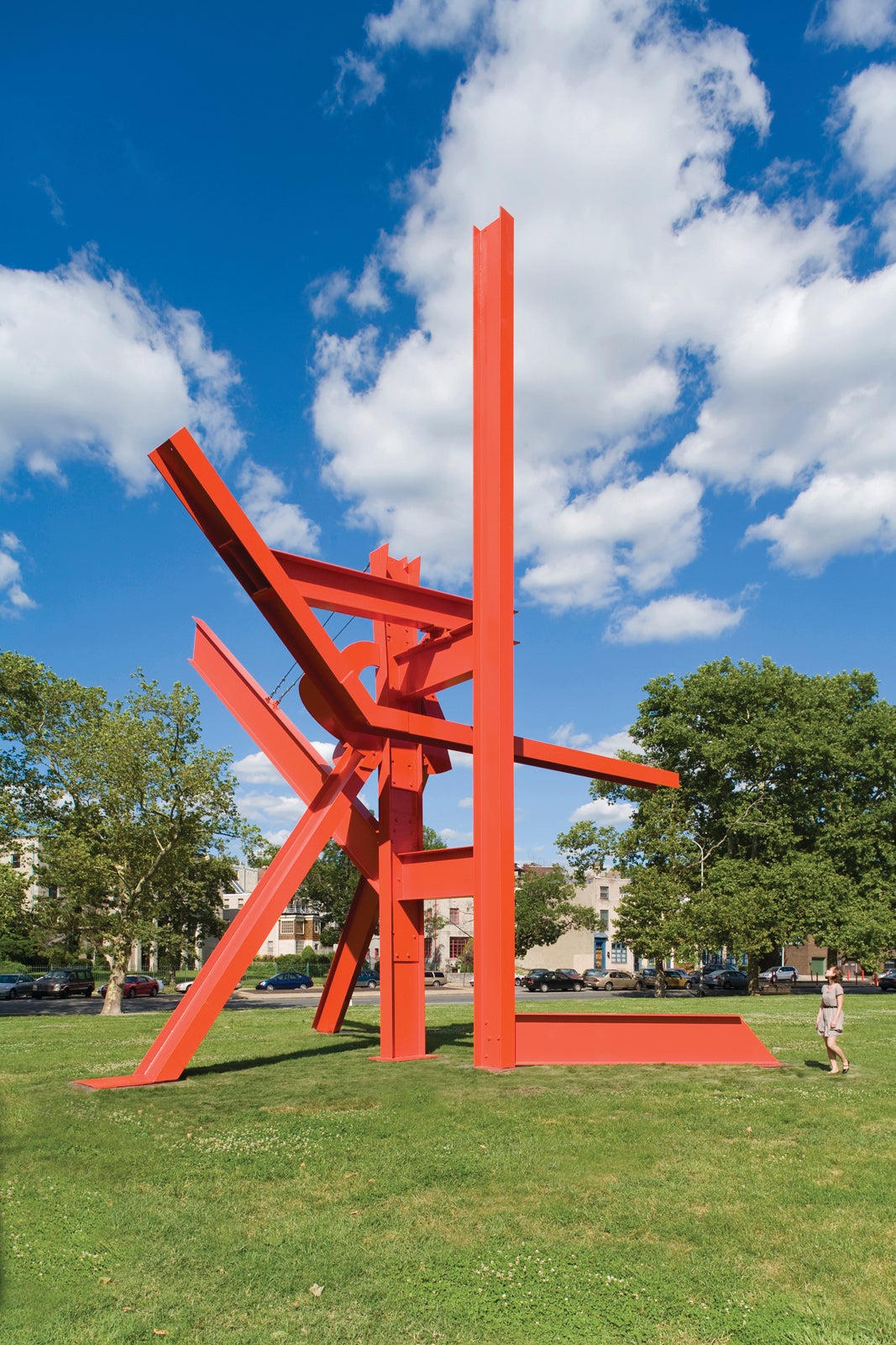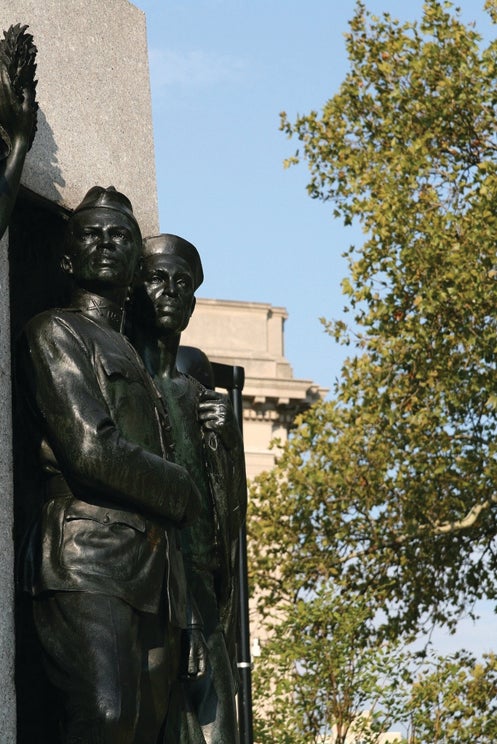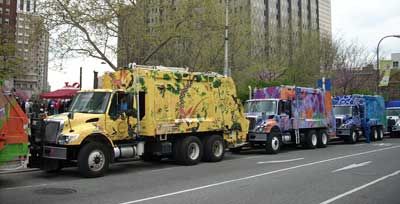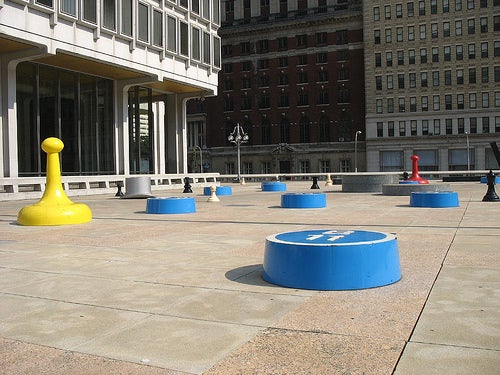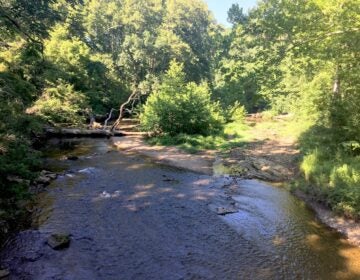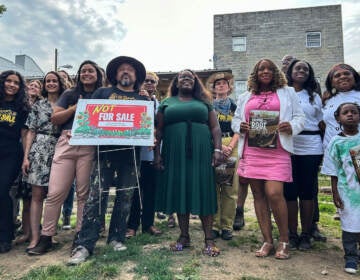Looking hard at our public space during the next half century
Nov. 2
By Todd Bressi
For PlanPhilly
You’ve seen them from time to time as you walk about the city — the giant clothespin at Centre Square, the “ghost house” at Franklin Court, the crazy roller-coaster-like structure suspended in the Convention Center, the “cave” that passengers at the airport’s Terminal C security checkpoint walk through, the new seating along 40th Street, the mosaics and murals on Norris Street just off Frankford Avenue.
These are glimpses of public art in Philadelphia, the city with one of the most distinguished traditions and formidable collections anywhere, as well as a panoply of government and non-profit organizations that create and manage artwork in public buildings, public spaces and parks throughout the city.
Fifty years after launching the nation’s first “percent for art” policy, it’s time for Philadelphia to begin “a conversation, a dialogue, about what direction public art is going to go in the future,” announced Gary Steuer, director of Philadelphia’s Office of Arts, Culture and Creative Economy. With that challenge, he kicked off a symposium, “Imagining the Next Fifty,” at the University of the Arts last Thursday night.
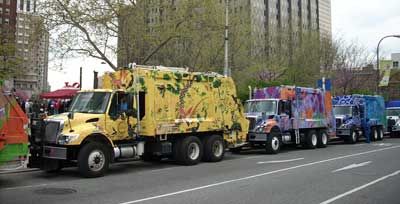
Hundreds of city, state and federal agencies have adopted policies that set aside a portion of their capital budgets for artworks — but Philadelphia was first. In 1959, the City Council and the Redevelopment Authority took the trail-blazing steps of requiring city capital projects and private developments to include public art. The intent was to “humanize and mitigate the deficiencies in the urban landscape,” according to Aaron Levy, the symposium facilitator, and the Executive Director and Curator of the Slought Foundation.
Since then, SEPTA and the Convention Center Authority have followed suit; and Philadelphia International Airport has created a program of temporary art exhibitions. Twenty five years ago the city launched what has eventually become the Mural Arts Program, which has created more than 3,000 works throughout the city. And before all of this, more than a century ago, the Fairmount Park Art Association began its work creating and caring for artworks in the city’s parks and open spaces.
“We live in a landscape immersed in public art, and I don’t know that people realize that,” noted Levy. “Public art is so easily accessible.
Levy’s discussion with his panelists — artists Dennis Oppenheim and Andrea Blum, planner and artist Damon Rich, and curator Adelina Vlas — covered a range of broad and well-worn topics, from the ways in which artists define and interact with the public, to the bureaucratic processes that envelop the creation of public artworks, to the interplay between gallery art and public art.
The evening also offered a handful of glimpses into how public art might evolve in the coming years.
First, the blurring of lines between art and architecture, as well as other design disciplines, could be a source of fresh ideas. Oppenheim, a sculptor who is known for working in architectural scales and vocabularies, observed that architecture has far surpassed most sculpture in its ability to create artistic form in the public realm. “Architecture operates in the most difficult, painful environment, inundated with codes, restrictions and political maneuvering,” but architects have developed more robust theories and tools for shaping their work, he explained. “I am feeling beaten by their achievements.”
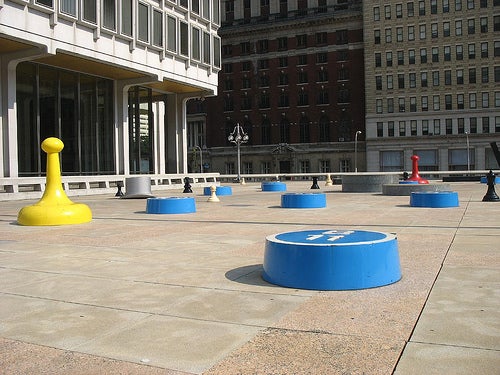
Second, art programs (and their clients) will grow creatively by looking beyond specific sites or, by “thinking about how to abstract oneself out of the situation,” as Rich put it. Blum advocated for “programs that don’t have such a strong regime – that don’t say, this is a site, let’s do something on this site — but regard themselves as creative institutions. It gets more creative when you think of it as education.”
Third, art programs should work to engage people in public life. “I am interested in making situations where people feel comfortable making the claim, ‘I am part of the public,’” Rich said. But the panelists discouraged the notion that this necessarily meant involving the public in the creation of the art itself. “You can talk to people, but it’s a conversation. There’s no way to please everybody,” Oppenheim observed.
One audience member questioned whether “guerilla” artists, who work in the public realm but outside the structure of official public art programs, should be embraced. “We’d be crazy if we didn’t encourage it,” Levy answered. “It’s part of the larger cultural ecology, and one of those forms of practice that should be given its due.”
What the symposium did not ask – and it might be pertinent – is what role should city governments have in commissioning public art these days. City art programs are not a growth industry – cities are cutting back their capital budgets, or cutting back on art budgets, or cutting out their art programs entirely, leaving traditional “percent for art” programs trying to re-establish their relevance and their financial base.
In practice, the “percent for art” model that Philadelphia invented and clings to has been fading for decades. Elsewhere, public art programs have generated projects linked to urban design strategies, teamed up with curatorial groups to create dynamic festivals of temporary artworks, and embraced non-traditional media such as data-driven art platforms.
The symposium did not explore the subject of unique opportunities that may exist in Philadelphia. Clearly, revitalized riverfronts are places to think of a vigorous role for public art. How will the constraints of current funding and bureaucratic frameworks allow art into the city’s dramatic new public spaces? And the Philadelphia Water Department, on a mission to re-imagine how Philadelphia manages its sources of water and stormwater, might trigger a whole new generation of innovative projects, and at the same time reconnect with the history of commissioning artworks related to its water system — most notably William Rush’s sculptures at the Schuylkill Waterworks and Centre Square Waterworks, and Alexander Stirling Calder’s Swann Fountain.
“We can affirm the past by imagining the future,” Levy said at the outset of the evening. Last week, that conversation began with questions about who is a public artist, where and how is public art created, who is the audience for public art, and how that artwork impacts the visual, social, and cultural nature of the city.
Todd W. Bressi is an urban designer and planner who consults with public art programs throughout the U.S. and Canada. For more than a decade, he was Executive Editor of the design journal Places.
Contact the reporter at todd.bressi1@verizon.net
WHYY is your source for fact-based, in-depth journalism and information. As a nonprofit organization, we rely on financial support from readers like you. Please give today.



